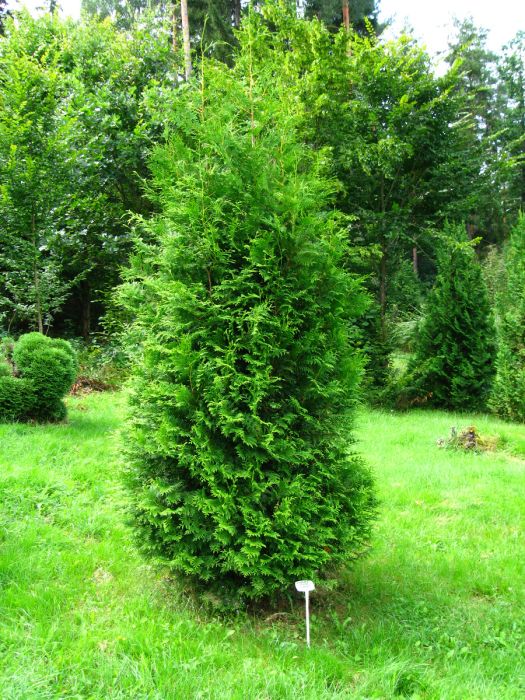Top Ten Evergreens
Brad shares his Top Ten Evergreens!




Native white cedar. Very hardy, fast growth rate and grass-green foliage. White Cedar is primarily valued in the landscape for its distinctively pyramidal habit of growth. It has rich green evergreen foliage. The scale-like sprays of foliage remain green throughout the winter. The shaggy antique red bark adds an interesting dimension to the landscape. Excellent for windbreaks, as a large screen, and as wildlife habitat.
At Minnesota's Destination Garden Center, we offer a diverse range of trees to suit any landscaping need. Whether you're looking for shade trees to cool your home or ornamental trees to add beauty and interest, you'll find the perfect tree at Gertens. Our knowledgeable staff can help you select the right tree for your space and provide tips for care and maintenance. Visit Gertens today and explore the unmatched variety of trees to enhance your outdoor environment!
White Cedar is a dense evergreen tree with a strong central leader and a distinctive and refined pyramidal form. Its relatively fine texture sets it apart from other landscape plants with less refined foliage.
This is a high maintenance tree that will require regular care and upkeep. When pruning is necessary, it is recommended to only trim back the new growth of the current season, other than to remove any dieback. It has no significant negative characteristics.
White Cedar is recommended for the following landscape applications;
White Cedar will grow to be about 30-40 feet tall at maturity, with a spread of 15 feet. It has a low canopy with a typical clearance of 2 feet from the ground, and should not be planted underneath power lines. It grows at a slow rate, and under ideal conditions can be expected to live for 50 years or more.
This tree does best in full sun to partial shade. It is quite adaptable, prefering to grow in average to wet conditions, and will even tolerate some standing water. It is not particular as to soil type or pH. It is somewhat tolerant of urban pollution, and will benefit from being planted in a relatively sheltered location. Consider applying a thick mulch around the root zone in winter to protect it in exposed locations or colder microclimates. This species is native to parts of North America.
| Gerten Grown Plants | Gerten Grown Plants |
|---|---|
| MN Native Plants | MN Native Plants |
| Tree Type | Evergreen |
| Sun Preference | Full-Sun, Part-Sun |
| Mature Height (Range) | 25 - 50 feet, 50+ feet |
| USDA Hardiness Zone | 3, 4, 5, 6, 7 |
| Common Family Name | Arborvitae |